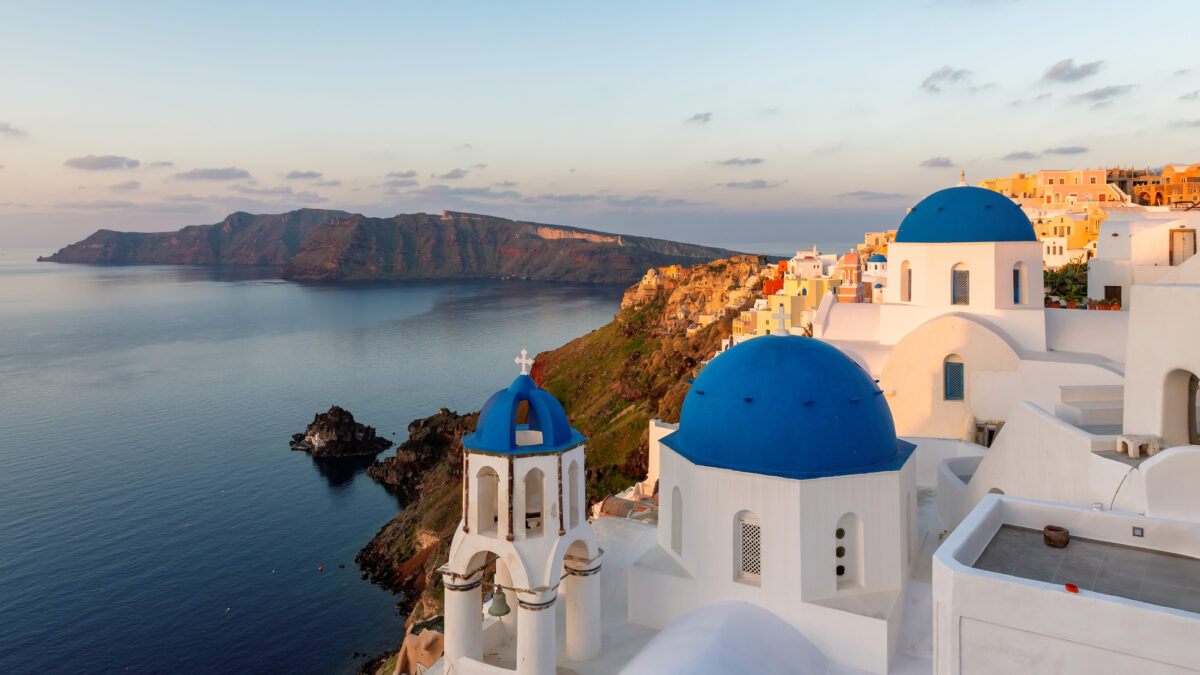Spectacular sunsets, a rich culinary culture and the volcano are only some of the elements that make Santorini one of the world’s most popular tourist destinations. Santorini lies in the Cyclades, south of Ios and west of Anafi. Historically, Santorini, or Thera as it’s otherwise known, was originally known as Stroggyli (round) due to its shape. That larger island together with the two neighbouring islets, Thirasia and Aspronisi, formed a striking complex that was partially submerged in the wake of an enormous volcanic eruption in the late 17th century B.C. This was followed by another eruption around 1950.
Today, Santorini is intrinsically linked to its volcano. The volcanic caldera is listed as one of the most striking landscapes on the planet, exhibiting a truly unique morphology. Oia, Fira, Ammoudi, Imerovigli and Firostefani, as well as gorgeous villages such as Pyrgos and Megalochori, are just a few of the striking settlements waiting to be explored. In addition, visitors arriving on the island by ferry will disembark at the island’s welcoming port, Athinios. Santorini boasts a number of unparalleled beaches. Kokkini Paralia with its distinctive copper-coloured rock, as well as many other beaches with black sand, all present exceptions to the norm of white or golden sand and turquoise waters encountered elsewhere in the Cyclades.
Cuisine
Traditionally, Santorini has been viewed as the ultimate island culinary destination, boasting internationally recognised and award-winning restaurants.
Santorini’s local produce includes its renowned fava (Lathyrus clymenum), white eggplant, cherry tomatoes, capers, caper leaves, and chlorotyri cheese. Traditional sweets like melitinia and koufeto also highlight the island’s rich culinary heritage. Famous chefs and cooks have used the island’s products as inspiration and let their imaginations run wild, making Santorini an enduringly fascinating culinary destination capable of offering visitors the entire spectrum, from simple, uncomplicated traditional dishes in the local taverns right through to more creative cuisine in its restaurants. Trademarks of Santorini’s cuisine include tomato fritters and (naturally) fava, in addition to other better or lesser known local dishes such as atherinopita (fried smelt with flour and onions), skordomakaronada (a dish featuring thick-cut pasta with fried onion, also known as the poor man’s macaroni), Santorini salad (made with rusks, capers, caper leaves, cherry tomatoes and chlorotyri), and sfouggato (omelette with local vegetables).
Beyond its food, Santorini is renowned for its wines. The island’s volcanic soil lends a distinctive character to its wines, which have earned international acclaim. The island’s best-known wine varieties include the (dry white) Nychteri, the (sweet white or red) Vinsanto, which was used historically as Communion wine in the Russian Orthodox Church, and Brusko.
How to get there
Santorini is located in the Cyclades and is easily accessible via ferry from the ports of Piraeus and Rafina or by air.










